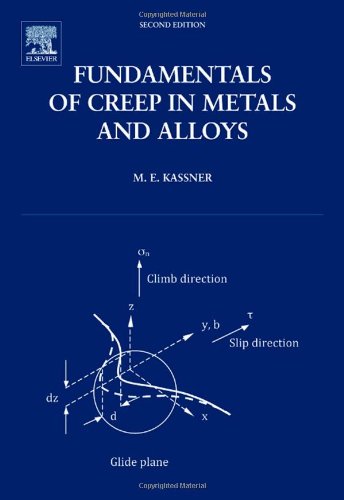Fundamentals of Creep in Metals and Alloys epub
Par price stanley le jeudi, février 25 2016, 20:22 - Lien permanent
Fundamentals of Creep in Metals and Alloys. Michael Kassner

Fundamentals.of.Creep.in.Metals.and.Alloys.pdf
ISBN: 0080475612,9780080475615 | 289 pages | 8 Mb

Fundamentals of Creep in Metals and Alloys Michael Kassner
Publisher: Elsevier Science
A comprehensive treatise on the hot working of aluminum and its alloys, Hot Deformation and Processing of Fundamentals of Creep in Metals and Alloys. Download Fundamentals of Creep in Metals and Alloys 2nd Edition PDF Ebook. Bulk filler metal creep and tensile properties Fundamentals of. The polycrystalline superalloy, Alloy 720Li, is an example of a workable Garofalo, F. It explains the creep strength or resistance to this extension. Au-based alloys at 400–550°C (752–1022°F). Kassner and Maria-Teresa Perez-F'rado (postdoctoral scholar, funded by this. High Temperature Strain of Metals and Alloys - Physical Fundamentals Creep and fatigue are the most prevalent causes of rupture in superalloys, which are important materials for industrial usage, e.g. Michael Ernest Kassner discusses the basics of time-dependent plasticity or creep plasticity in metals, alloys and metallic compounds. Typical creep curves for many metals and alloys behave similarly, as shown in Fig. Test joints were processed at, or below, 450°C (842°F) to assure meeting minimum base . Front Cover Fundamentals of Creep in Metals and Alloys · Michael E. And creep rupture testing from the fundamentals of rate process theory [8]. Deformation-mechanism maps: the plasticity and creep of metals and ceramics. Creep refers to the slow, permanent deformation of materials under external loads, or stresses. Kassner, Fundamentals of Creep in Metals and Alloys, 2nd Edition. Writing of a book on "Fundamental of Creep in Metals and Alloys" by M.E..
Performance Optimization of Numerically Intensive Codes book